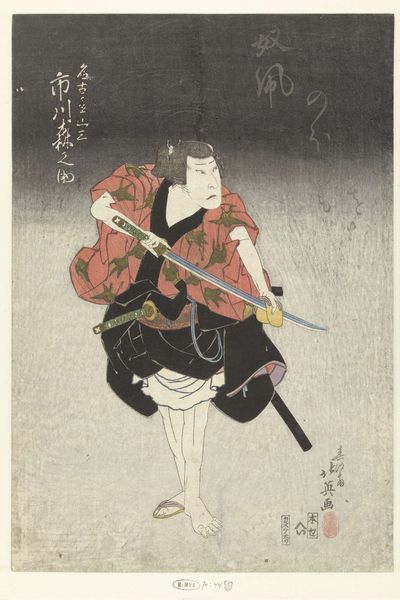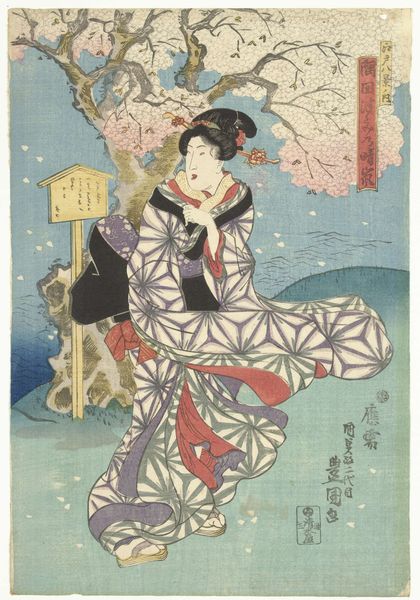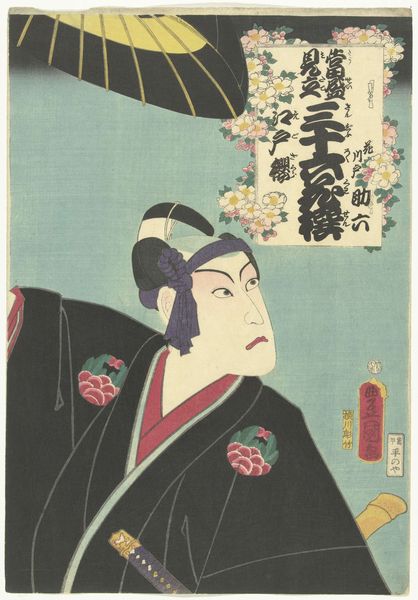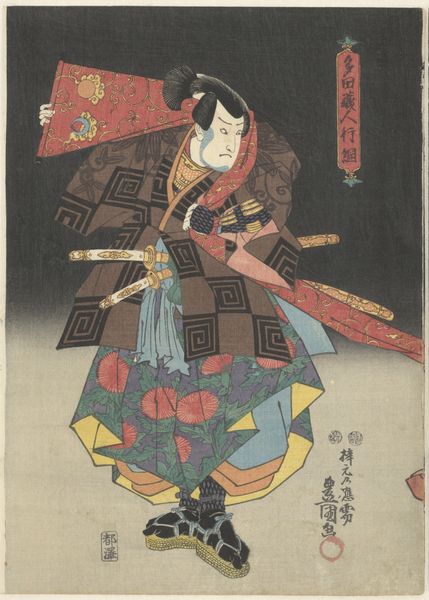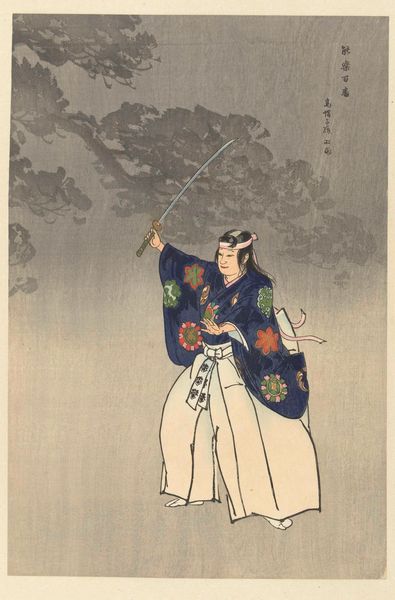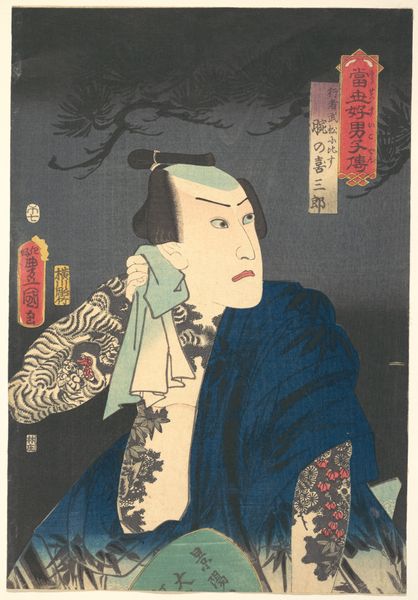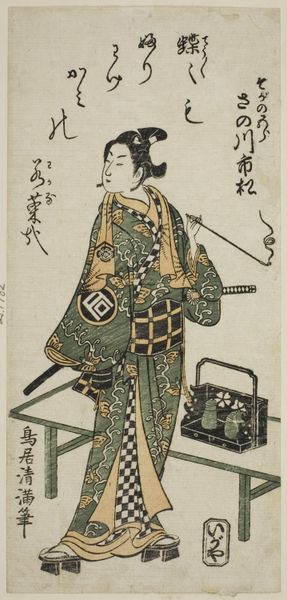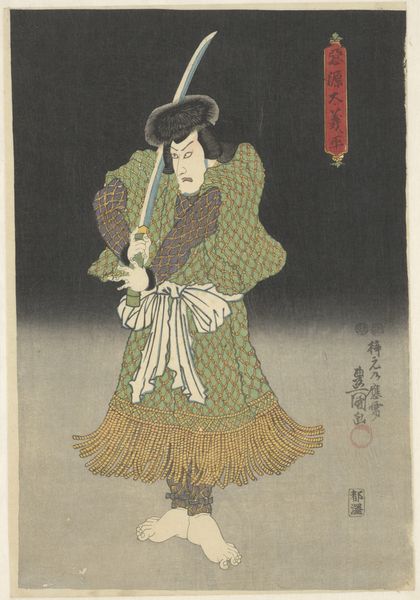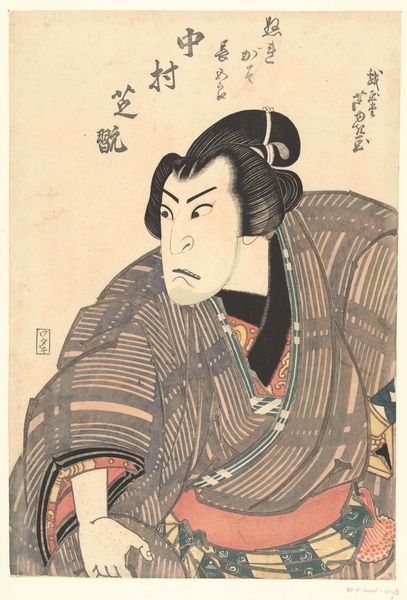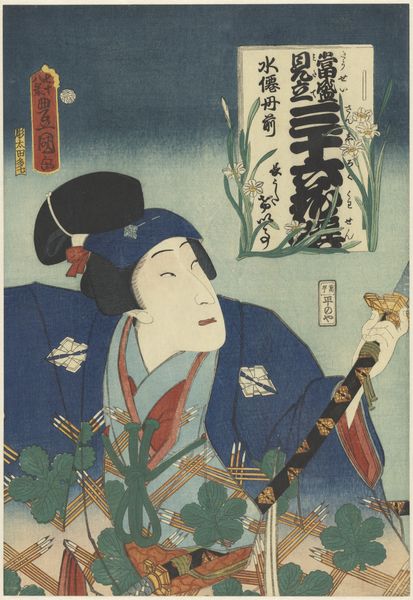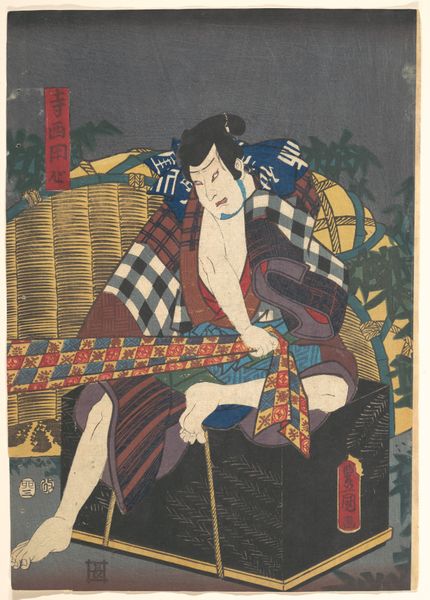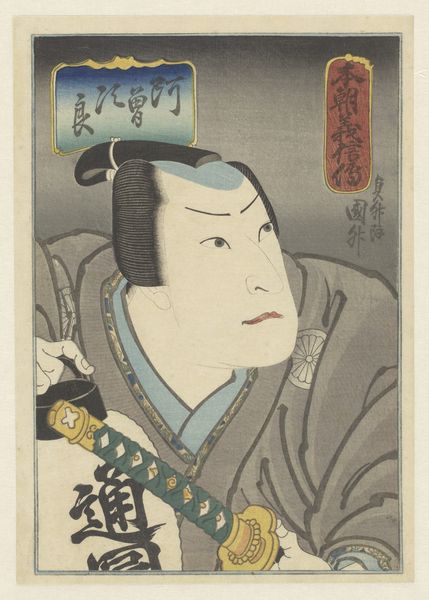
Dimensions: height 376 mm, width 258 mm
Copyright: Rijks Museum: Open Domain
Editor: This woodblock print by Tsukioka Kogyo, from 1925, is titled "Actors in the Noh theater piece Kokaji." It shows a figure in elaborate robes with two swords, and the subdued color palette gives it a solemn feeling. What's particularly striking about this image for you? Curator: What catches my eye is the deliberate construction of cultural identity presented here. The artist is drawing upon a tradition – Noh theatre – deeply embedded in Japanese society. The choice of Kokaji is not accidental; it's a play about a swordsmith who, with divine help, forges a sacred blade. Editor: So, it's referencing something specific. Curator: Precisely. Kogyo isn't simply depicting a scene; he’s invoking the associated values – skill, dedication, and the role of the divine in craftsmanship. How do you think this print, produced in the 1920s, would have been received? Editor: Maybe as a reminder of those traditional values, at a time of modernization and Western influence? Curator: Exactly. Think about the social context. This work reflects a deliberate attempt to preserve and promote traditional Japanese identity. The figure, elevated on a red platform, isn't just an actor; he embodies the ideals the play represents. The print format also made it accessible, furthering its reach. Editor: That makes so much sense! I was just looking at a portrait, but you helped me see all these layers of cultural meaning, of history being actively kept alive. Curator: It’s about seeing how art serves as a cultural anchor, shaping and reflecting societal values. I learned new ways to consider performance and its significance for the print.
Comments
No comments
Be the first to comment and join the conversation on the ultimate creative platform.
